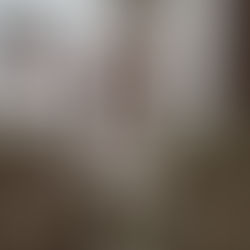The Art of Balancing Up Lighting and Down Lighting in Landscape Design
- Topaz Du
- Mar 2, 2023
- 3 min read
Updated: Apr 29, 2023
Down lighting is a natural form of light that creates a different effect, and I believe it's important to incorporate it into landscape design. While many people often want to up light, I prefer down lighting because it illuminates plants and animals on the ground below. In my experience, a lot of trees lend themselves to up lighting due to the beauty of the bark and the build-up of the tree. But incorporating down lighting can give balance and a different texture of light to the overall design.

When it comes to selecting fixtures, I like to use a combination of directional down lights and pendants. The goal with directional down lights is to hide the source of the light and highlight the interior of the tree, which is usually not illuminated with up lights. Meanwhile, pendants are great for unusual applications like highlighting a mature Palo Verde tree, as they can encompass a lot of light with just one fixture.
Ultimately, my lighting plan aims to create a differentiating effect for the residence by using both up lighting and down lighting. By selecting the right fixtures and techniques, we can transition light smoothly, make the space inviting and comfortable, and highlight the unique features of the landscape.
I understand the importance of balancing up lighting and down lighting in outdoor spaces. The trees are particularly well-suited for up lighting due to the unique nature of their bark and structure. However, down lighting is just as important because it is the most natural form of light and illuminates plants and animals on the ground below. When down lighting a tree, it is important to hide the source of the light and highlight the interior branching structure. Pendant lights are also a great option as they create a natural and inviting feel, while also providing safety and smooth transitions of light. In a hotel setting, adding exterior lighting to patios and cabanas is crucial for safety and aesthetics. By using hanging downlights, we were able to create a warm and inviting atmosphere for guests.
It's also important to consider both aesthetics and functionality when illuminating a space. For example, when lighting a courtyard with palm trees, we want to showcase their beauty while also ensuring that the area is safe to travel through at night. That's why we use down lighting for functional safety, positioning the fixtures higher to get a wider light output. And when it comes to aesthetics, we can use filters to create a moonlight effect that balances with the natural light. It's all about finding the right balance between form and function, and using the full range of down lights to create elegant looks that enhance any space.
This kind of lights are actually so light that you don't really notice it. They are normally lit by low voltage, but when you're out here, it doesn't look like it's lit at all. It's just safe and secure, perfect. That's the perfect effect for this wide space when the homeowner wants to use it at night. And there's one other thing we should notice when purchasing this kind of lights. The dim ability of it. It will be great to have a brightness adjustments function. Then, we can have settings for party mode where it's nice and lit and bright, and we can also dim it down for security of evening.
Downlighting is the most natural lighting technique. Use downlights to softly illuminate gardens, shrubs, and landscape vegetation during the late evening and at night. Downlights installed in man-made structures like pavilions, gazebos or trellises provide a nice light to high-traffic areas. When you install downlights above a tree canopy, you can achieve a very dramatic moon lighting look with shadows. You can also use downlights to illuminate walkways or areas with changing elevation. Use downlights to create many elegant looks now.
_edited.jpg)

















Comments